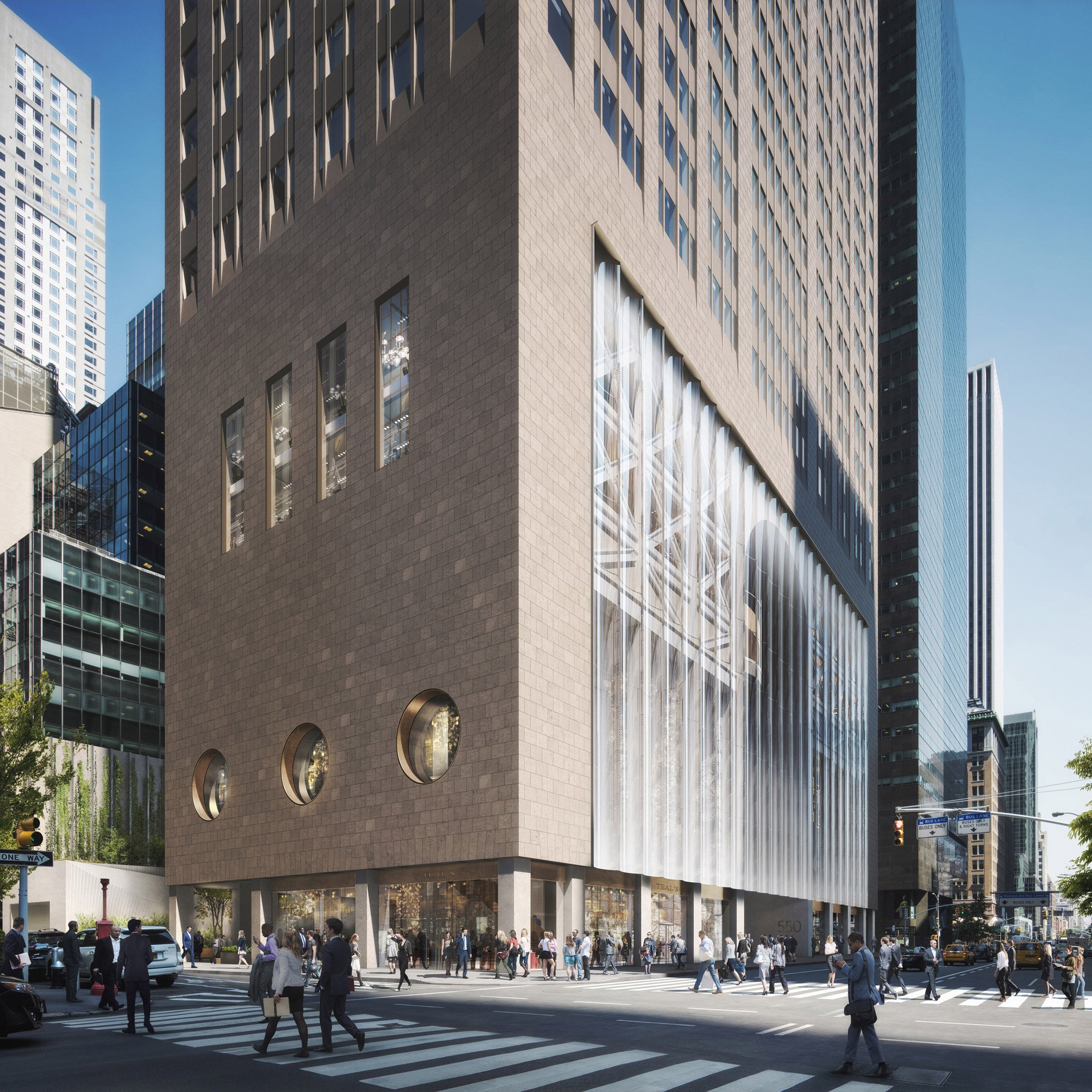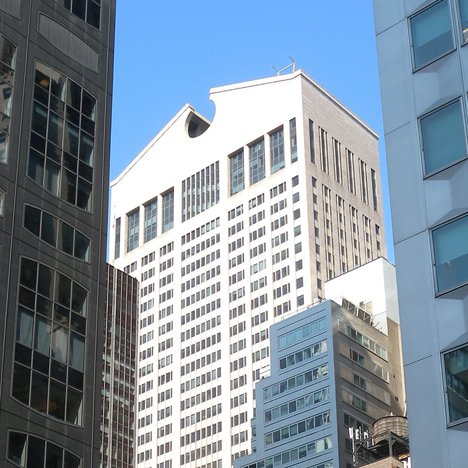British architect Norman Foster has criticised postmodern architecture for not being serious enough, but believes important examples like Philip Johnson’s AT&T Building in New York should still be preserved.
Foster told Dezeen he dislikes the controversial movement. But despite that, he has lent his support to a campaign to prevent Johnson’s iconic New York skyscraper – one of the most prominent examples of postmodern architecture – from being renovated by Snøhetta.
He said that postmodernism – which developed in the 1970s as a counter to the utopian ideals of modernism, and involved reinterpreting historic forms – became too gimmicky for his liking.

“I enjoy authentic, classical architecture,” he told Dezeen. “I am less happy with cartoons.”
“I respect that it was a reaction against certain tendencies, but along the way it became more about a veneer, more about styling and less about the important issues behind architecture, which if you like is the social agenda,” Foster said.
Postmodernism continues to divide opinion
Foster is the latest to weigh in on the controversial movement, which has seen a resurgence in attention over the past few years. Recently, architect and former pomo champion Sean Griffiths argued that bringing back postmodernism’s ironic ideology could be dangerous in today’s political climate.
Foster said that buildings should first of all address the needs of their users, rather than simply provide an outlet for comedy.
“Architecture is a means to improve the quality of life and not just about the triviality of styling or a veneer of colour or some kind of cartoonish blob based on a classical motif,” he said.
“I think that architecture is more serious than that. But I also respect those who think it’s a vehicle for humour, for wit, for sarcasm, for sardonic displays. [But] I find that rather cynical.”

The renewed interest in postmodernism has in part been sparked by threats to various other examples of the style. These included the demolition threat over Michael Graves’ Portland Building, a preservation battle for James Sterling’s No 1 Poultry and major alterations to Terry Farrell’s TV-am studios.
The proposal by Oslo and New York firm Snøhetta would involve replacing the brick base of Johnson’s AT&T Building, now known as 550 Madison, with a glass facade.
Foster joins calls to preserve AT&T Building
Foster took to Instagram to back a protest that occured outside the tower on 3 November 2017, when architects and preservationists called for the plans to be scrapped.
“It is important in terms of our heritage to preserve the best examples of a movement, whether it’s the brutalist movement or the postmodernist movement,” he told Dezeen.
Foster acknowledged the 647-foot-tall (197-metre) AT&T Building, completed by Johnson and partner John Burgee in 1984, as one such example.
“This building was certainly, apart from anything else, a quest by Philip Johnson to demonstrate an alternative to the glass curtain wall, to perhaps show or try to show that a building which is more of masonry, arches and more solid, can come down to the ground with its famous Chippendale top,” said Foster.
“I think that it has, of its period, a certain integrity and it raises serious questions,” he continued. “If you replace it with a glass curtain wall, the base of the building… that is part of New York’s heritage and Philip Johnson is inseparable from New York.”

Johnson was an important proponent of modernism, and played a crucial role in introducing the style to America in the 1930s. But he later dramatically switched style and adopted postmodernism, with the AT&T Building unveiled as the first indication of this dramatic shift.
“He was, even before he became a practising architect late in his life – probably in his early 50s – he was a chronicler of architectural movements,” said Foster.
“His Glass House in New Canaan in the 1940s was a decade ahead of Mies van der Rohe’s Farnsworth House. So in many ways he was always pushing the boundaries, pushing the limits,” he continued.
“If you acknowledge that then I think it raises certain questions about which buildings you list, which buildings are important of their period and why.”
Foster – who leads his London-based firm Foster + Partners – is one of the world’s most famous architects, and gained his reputation as a key figure of the high-tech movement. This architectural style emerged around the same time as postmodernism, but is wildly different in aesthetic and ideology.
High-tech buildings have structural elements expressed both inside and out, and incorporate technologies into their fabric. Examples of Foster’s projects that demonstrate the style include the HSBC Building in Hong Kong, the Reichstag renovation in Berlin, and Stansted Airport in the UK.
The AT&T Building isn’t the only example of postmodernism under threat in the US. Filmmaker Nathan Eddy – who organised the protest in New York – also recently released a movie about Helmut Jahn’s James R Thompson Center in Chicago, in an attempt to save the government building from demolition.
The post Some “cartoonish” postmodern buildings are worth saving, says Norman Foster appeared first on Dezeen.
